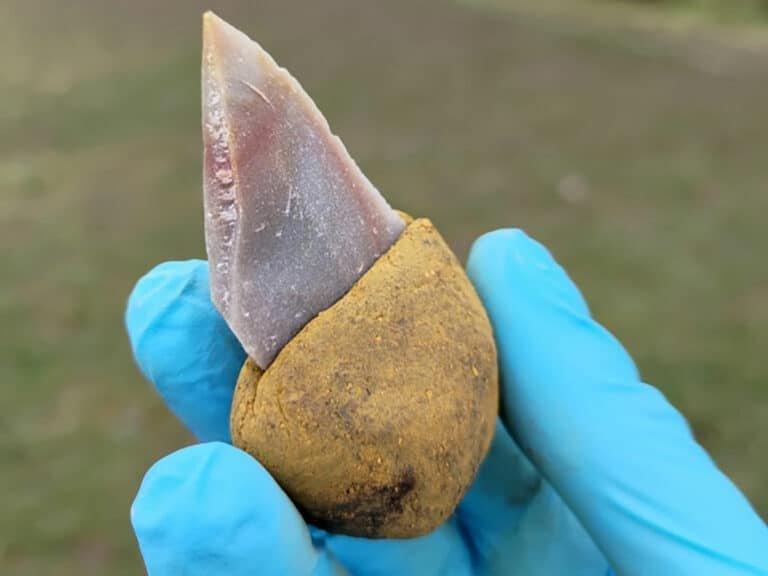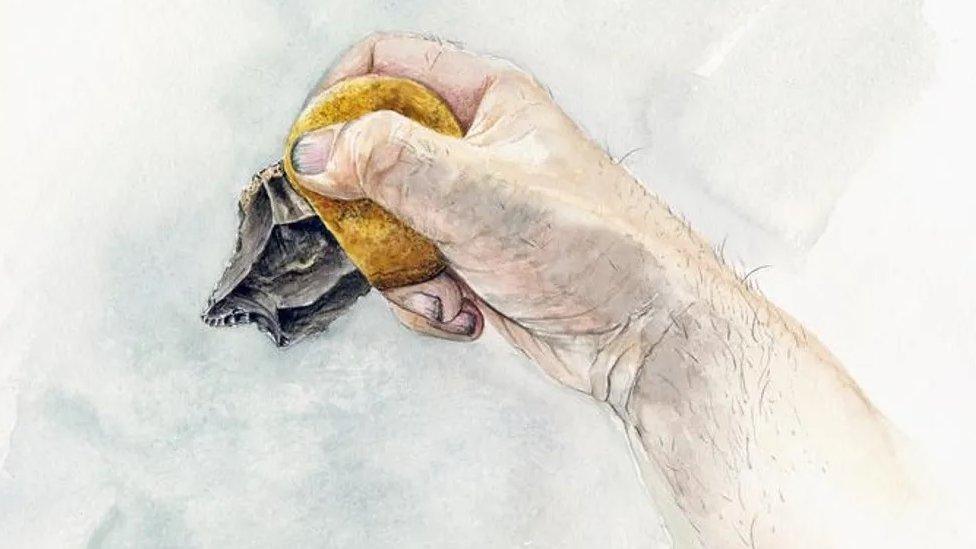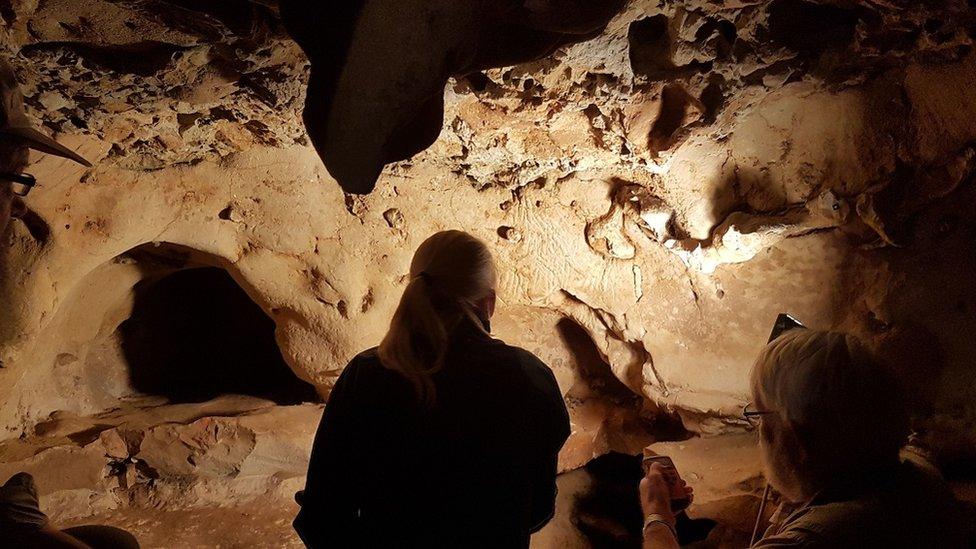Neanderthals made a type of glue to use on their tools
- Published
- comments

Neanderthals, an extinct species of early humans, used a type of glue on their tools say scientists.
They made the discovery after a new analysis was carried out on forgotten artefacts recently rediscovered in a Berlin museum.
Not only was the glue used to hold the tools together it was also used on the parts that would've been hand held, for a better grip.
The discovery suggests that Neanderthals had more intelligence than previously thought and researchers say it's a significant piece to 'understanding human evolution.'
Patrick Schmidt, a researcher from the University of Tübingen in Germany who led the study said: "The fact that Neanderthals made such a substance gives insight into their capabilities and their way of thinking."
The findings have been published in the journal Science Advances.
Who were the Neanderthals?

Around 600,000 years ago, humanity split in two. One group Homo sapiens, eventually evolved into modern humans, while the other was known as the Neanderthals.
Compared to modern humans, Neanderthals had a stronger, heavier body type with shorter limbs. They also had longer heads and larger noses and typically more body hair.
They lived across Europe and south west and central Asia between about 400,000 to 40,000 years ago.
Neanderthals died out roughly 40,000 years ago. Exactly why is unclear, but it's thought they may have competed with and also bred with early modern humans eventually losing their distinctive characteristics over time.
Some studies have even found that almost everyone outside of Africa could have around 2% Neanderthal DNA.
Glue on Neanderthal tools

Researchers used the same substances as the Neanderthals to make their own glue and tool with a sticky handle
The discovery of glue on the Neanderthal tools was made after researchers analysed artefacts that had been collected more than 100-years-ago in France.
Since the 1960s, the 40,000-year-old tools had been stored at the Museum of Prehistory and Ancient History in Berlin, Germany.
They were analysed after the museum uncovered them during a review of its collection.
On stone blades and scrapers, researchers found a sticky substance, a mix of ochre and bitumen - minerals that both occur naturally in soil and rock.
Analysis of the materials showed that the ancient glue was strong enough to attach to a stone tool but not so sticky that a Neanderthal's hand would get stuck while holding it.

An illustration of how the stone artefact with the handle might have been held by a Neanderthal
The team soon realised that the makers of the tools had used the glue as the handle itself, moulding a grip from the sticky substance rather than using it to glue stone tools to wood.
The use of glue in early human tool making had been previously discovered on the continent of Africa, but this is the first and earliest of its kind found in Europe.
The researchers say it's likely that the Neanderthals made great journeys to find the materials for their tools, which is another indication that they were more intelligent and thoughtful than previously thought.
"What our study shows is that early Homo sapiens in Africa and Neanderthals in Europe had similar thought patterns," said Patrick Schmidt who co-led the study from the University of Tübingen in Germany.
- Published24 June 2023

- Published25 October 2022

